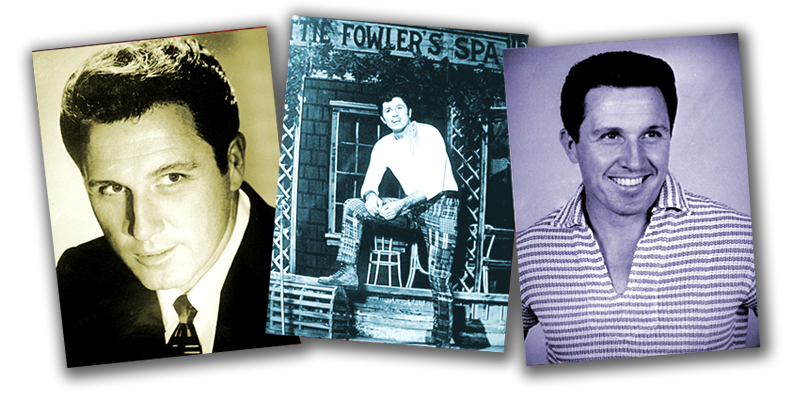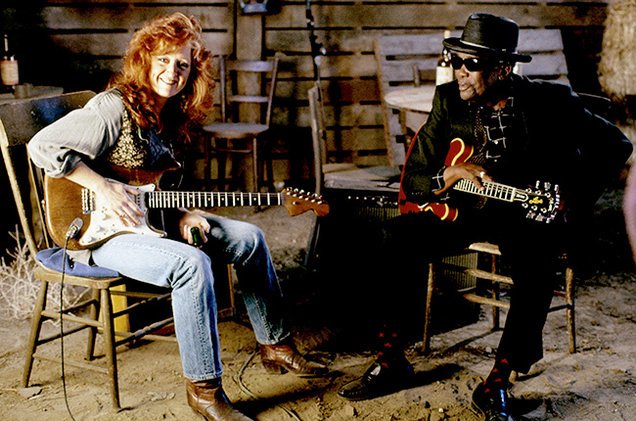
Ruth Brown, the pioneering singer whose 1950s hits including “Teardrops From My Eyes” and “(Mama) He Treats Your Daughter Mean” helped establish both the rhythm-and-blues form and Atlantic Records as the genre’s preeminent label, died Friday in a Las Vegas area hospital from complications after a heart attack and stroke earlier in the week. She was 78.
The Grammy- and Tony Award-winning Brown had suffered a variety of ailments in recent years. She had recovered sufficiently to work recently with director John Sayles on a feature film about African American musicians of the South, lawyer and family spokesman Howell Begle said Friday.
Much of her work in the last two decades had been as a driving force of efforts to get unpaid royalties and musical credit for R&B; and blues musicians, many of whom were not adequately compensated early in their careers.
To that end she had helped create the Rhythm and Blues Foundation in Philadelphia in 1988 — financed by a settlement with Atlantic Records — to work to recover not just her back royalties but also those of almost three dozen other R&B; performers. She was inducted into the Rock and Roll Hall of Fame in 1993.
Despite being one of the top-selling R&B; singers of the early 1950s, Brown had to support herself and her two children through a variety of menial jobs in the 1960s and ‘70s, after musical tastes changed and other artists took over the charts.
“She had a hard life,” longtime Atlantic Records producer Jerry Wexler said Friday. “She had to drop out for a while and work as a maid. She’d be cleaning people’s houses and then hear her records on the air.”
Feisty, joyful and possessing the perfect balance of sugar and salt, Brown’s voice took African American pop into the rhythmically expressive, emotionally direct rhythm-and-blues era.
Her nickname, in fact, was “Miss Rhythm,” though she could turn a jazz phrase or give life to a Broadway song with as much grace as she showed shimmying through R&B; hits such as “Lucky Lips” or her most famous song, “(Mama) He Treats Your Daughter Mean.” Her trademark squeal in that No. 1 hit brought female sauciness to the fore in pop.
“Little Richard once told me he got his squeal from Ruth Brown,” said Wexler, who produced dozens of her Atlantic recordings, mostly in conjunction with label founder Ahmet Ertegun.
Later, she came to symbolize other qualities, especially perseverance in the face of hardship.
“What always hit me about Ruth was her sass and the force of her spirit,” singer Bonnie Raitt said Friday. “Even though she had a girlish quality, behind it there was no kidding around…. She would sell the song, and the force of her personality was so strong — flirtatiousness mixed with vulnerability mixed with ‘Don’t mess with me.’ ”
The eldest of seven children, Brown was born in Portsmouth, Va. She began singing as a child in the church where her father was choir director. In her teenage years, after winning a prize at amateur night at New York’s famed Apollo Theater during a family vacation, she found her way onto the nightclub circuit, working briefly for bandleader Lucky Millinder and later at the Crystal Caverns, the nightclub in Washington, D.C., run by Cab Calloway’s sister Blanche.
Duke Ellington saw Brown perform there one night and encouraged Ertegun to sign her. He did in 1949, and soon after she produced the string of hits that gave the fledgling label the nickname, “The House That Ruth Built.”
On her way to New York to sign the contract with Atlantic, she was injured in an automobile accident that put her in the hospital for nearly a year. Ertegun and label partner Herb Abramson supported her financially during her recovery, even though she hadn’t recorded a note for them yet. When she recovered, she rapidly began returning the favor with a series of hits central to the transition of African American blues-based music of the first half of the 20th century into the driving beat-conscious sound that became the rage in the ‘50s.
“She’s the link between the 12-bar blues red-hot mamas of the ‘20s, ‘30s and ‘40s and the R&B; divas of the ‘50s,” music historian and author David Ritz said Friday. “She was the new archetype, and out of her comes Etta James and so many others.”
Touring with other Atlantic artists in the 1950s, Brown became, by necessity, a civil rights pioneer. In her 1996 autobiography, “Miss Rhythm,” she recalled desegregating a Mississippi gas station bathroom when her bus, also carrying singer Charles Brown and the vocal group the Fleetwoods, stopped so she could use the restroom. The group was soon surrounded by local police. “We thought they might lynch us,” she later remembered. Such encounters defined Brown’s intrepid early years.
Brown left Atlantic in 1961, overshadowed by the label’s newer artists, and faded from popularity. She raised her two sons, Ronnie McPhatter (who took the surname of his father, singer Clyde McPhatter) and Earl Weston. Brown was married four times but spent most of her life as a single mother; she worked a variety of jobs, including school bus driver, Head Start teacher and domestic.
The rejuvenation of her musical career started with a 1988 booking at the Cinegrill at the Hollywood Roosevelt hotel that led to a new record contract and, in turn, her performance on Broadway.
She won her only Grammy Award in 1990, for female jazz vocal performance, for her album “Blues on Broadway.” She also won a Tony Award in 1989 for her starring role in the Broadway musical “Black and Blue.”
“In her heart of hearts, she wanted to be a jazz singer, and in the end she wound up singing jazz and blues,” said author Ritz. “But she made her great mark in the field of R&B.; For her it became a happy meeting ground between commerce and art.”
She is survived by her sons as well as three brothers, Leonard, Alvin and Benjamin, and a sister, Delia. Another brother, Leroy, died Wednesday. Funeral arrangements were pending Friday, but Begle said she would be buried in Portsmouth. The Rhythm and Blues Foundation is planning a public memorial in New York City, with details to be announced.






 Visitors Today : 48
Visitors Today : 48 Now Online : 0
Now Online : 0
















































































































